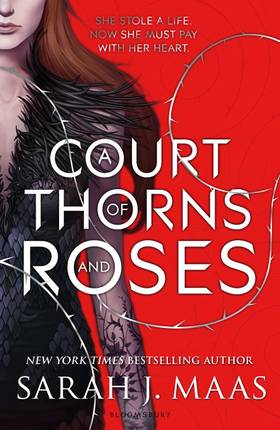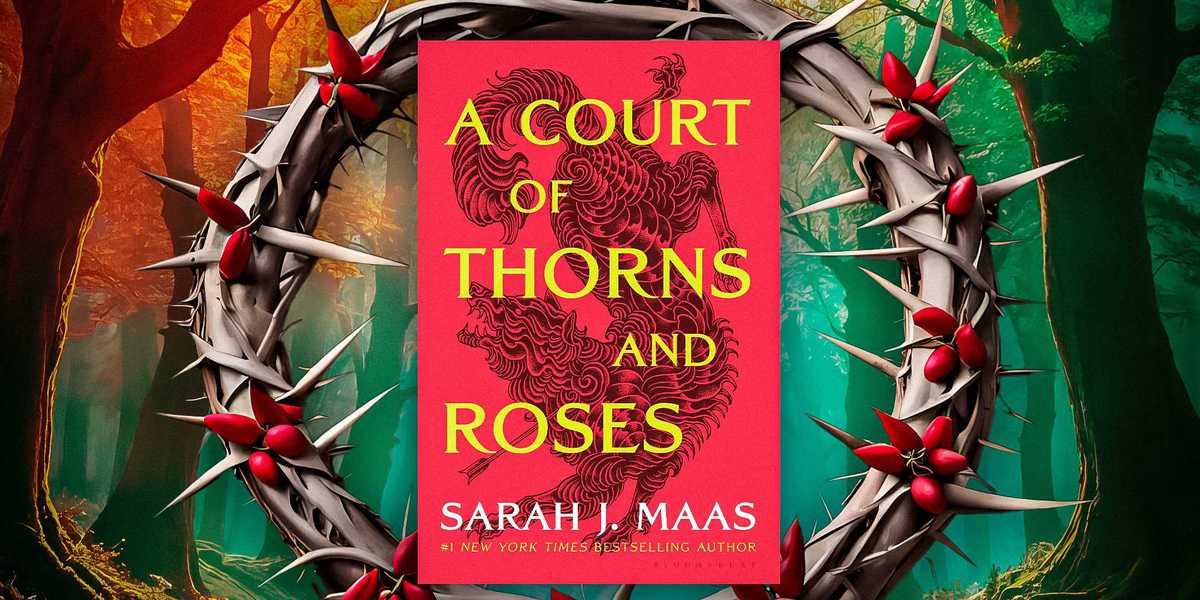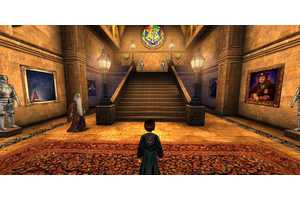5 Biggest Problems With The Fae In A Court Of Thorns & Roses
A Court of Thorns and Roses is one of the most popular romantasy book series of the past ten years, and it's easy to see why. With sweeping love stories and exciting action-adventure narratives, ACOTAR has everything that fantasy lovers look for in a narrative while taking the romance angle of the story seriously. Written by Sarah J. Maas, who also penned the popular series Throne of Glass and Crescent City, the Fae appear in much of Maas' work. However, the best and worst parts of the Fae have come under direct scrutiny in A Court of Thorns and Roses.
Many of the harsh realities of the original A Court of Thorns and Roses trilogy have lessened with time, as Maas has heard the comments from fans and critics alike and responded well. In the more recent books, the characters start to grapple with some of the structural issues with Fae culture and the more problematic relationship dynamics. Though Maas has started touching upon other characters in her work, the majority of ACOTAR has focused on Feyre, with the audience learning about the intricacies of the Fae through her eyes.
5 The Sexism Of Fae Society
This issue has been touched upon many times by fans and critics
As a romantasy book, it's no secret that ACOTAR leans into the spice and has plenty of explicitly intimate scenes. While this is part of the appeal of the series, there are times when the lines of consent are blurred in the story, and the romantic pursuits in the book go from endearing to overbearing. While many of the romantic interests in ACOTAR, like Rhysand, Cassian, and the other members of the Inner Circle, are framed as less problematic, there are still issues with their behavior.
Even though the more progressive male characters will sometimes speak out against this treatment, this is rarely acted upon, and little has been done to change the way Fae culture views women.
The Fae's culture of toxic masculinity in ACOTAR leads to some problematic moments throughout the series, with many of the female characters having to fight hard for any sense of agency. The fact that Illyrian women are barred from being warriors and the entire concept of the mating bond is impossible to overlook, even if there have been exceptions to these rules through Nesta and Elain. Even though the more progressive male characters will sometimes speak out against this treatment, this is rarely acted upon, and little has been done to change the way Fae culture views women.
Book | Year of Release |
A Court of Thorns and Roses | 2015 |
A Court of Mist and Fury | 2016 |
A Court of Wings and Ruin | 2017 |
A Court of Frost and Starlight | 2019 |
A Court of Silver Flames | 2021 |
4 The Fae's Hatred Of Humans In ACOTAR
Humans are treated as backward and evil by the Fae
When A Court of Thorns and Roses starts, Feyre and her sisters are living in the aftermath of an epic war between the humans and Fae. This conflict has deeply impacted their way of life. While the humans and the Fae are fearful and suspicious of each other, the Fae's hatred for humanity is pretty extreme. Since the humans fought back against the Fae for their freedom, it's easy to side with them in this conflict. Since the High Fae have so much more power than the humans, their prejudice seems a little misplaced and unfair.
While Rhysand and those in the Night Court fought on the side of the mortals, they're the minority of the Fae, most of whom believe the humans to be regressive and stupid. Throughout the books, Feyre and her sisters are regarded as less than because of their human origins, even after they're made into High Fae. As soon as she arrives in Prythian, the Fae are quick to belittle her and treat her as a second-class citizen, even though humans make up so much of the world.
3 The Fae In ACOTAR Don’t Act Their Age
Despite being hundreds or thousands of years old, they behave immaturely
While it's true that the Fae retain their youthful appearances throughout their lives, this doesn't mean they're not aging and gaining experience. When Feyre meets Tamlin and Rhysand, who are estimated to be in their 500s, they have experienced war and loss. Despite their advanced age, both of them act rashly and without thinking about the course of the books. They struggle to learn from their mistakes. While their mutual love for Feyre might cloud their judgment, they're not the only Fae who don't act their age.
Many of the grudges and conflicts that persist in Prythian could easily be solved or negotiated if the Fae were willing to compromise. This is a skill that's often associated with age, as is the ability to evolve. One of the ways that the Fae's refusal to move forward impacts the story is the way few people besides Rhysand and the Night Court want to incorporate progressive changes to the Fae world. Most of the longstanding leaders are hesitant to make changes for the good of all Fae.
2 The Class System Makes No Sense
The difference between the High Fae and the Lesser Fae is intense
While it's expected for any fantasy book to grapple with a fictionalized version of class and social structures, as this is a direct connection to the real world, the structure of ACOTAR's version is confusing. The High Fae are the rulers of Prythian and were made to look human, while the Lesser Fae have more fantastical characteristics and are meant to primarily do the work the High Fae don't want to do. In addition, the monetary disparity is intense in ACOTAR, as Rhys and Feyre seem to have limitless funds.
However, even with all of this money, the High Lords never seem to do much to help lift the struggling populations of the Courts, specifically the Illyrians, who are in poverty. While economics isn't a central part of the story in ACOTAR, the lack of awareness that the people in power have about those they rule is astonishing. Additionally, the fact that the Fae despise humans, but the group that is in the highest position of power in the series looks the most like humans is a glaring contradiction in ACOTAR.
1 None Of The Fae Courts Get Along In ACOTAR
They're constantly on the brink of going to war
The next A Court of Thorns and Roses book must address problems with not only the characters in ACOTAR but also the structure of the world. World-building has always been an underdeveloped part of the series, and this can be seen in the strained dynamic between the different courts. While it's the history of alliances and conflicting loyalties that has led to so much tension, particularly between the Night Court and the Spring Court, this doesn't make for a cohesive society.
Instead of being united in their common goals and enemies, each Court is frequently scheming about how best to undermine the rest and strengthen its own corner of the world.
Instead of being united in their common goals and enemies, each Court is frequently scheming about how best to undermine the rest and strengthen its own corner of the world. Though the Night Court is easily the strongest Court in all of A Court of Thorns and Roses, it would make sense for Rhysand and his Inner Circle to be thinking more seriously about making peace throughout Prythian, as this is what will prevent further wars and devastation.

- Publisher(s)
- Bloomsbury Publishing
- Publication Date
- 2015-05-05
- Franchise
- A Court of Thorns and Roses
- ISBN#
- 9781619634442
- Author(s)
- Sarah J. Maas
- Genre(s)
- Fantasy, Romance











Your comment has not been saved